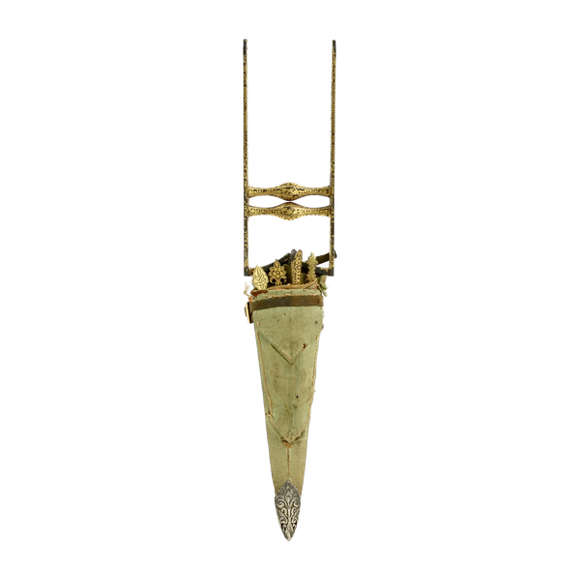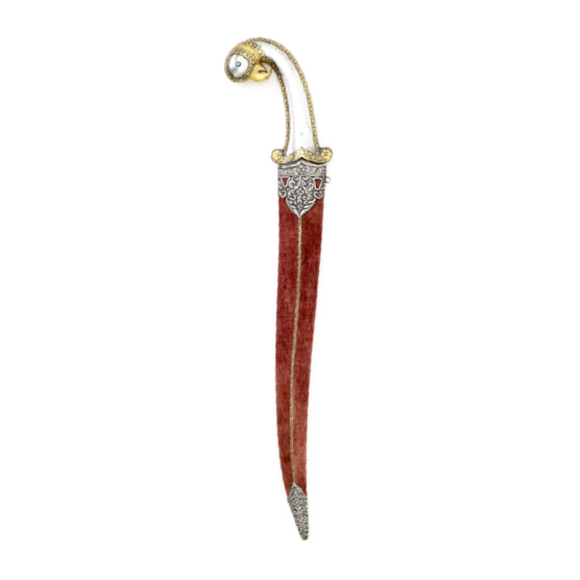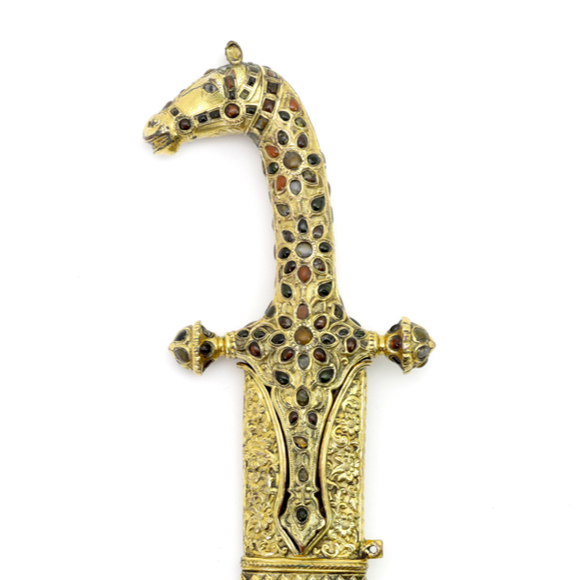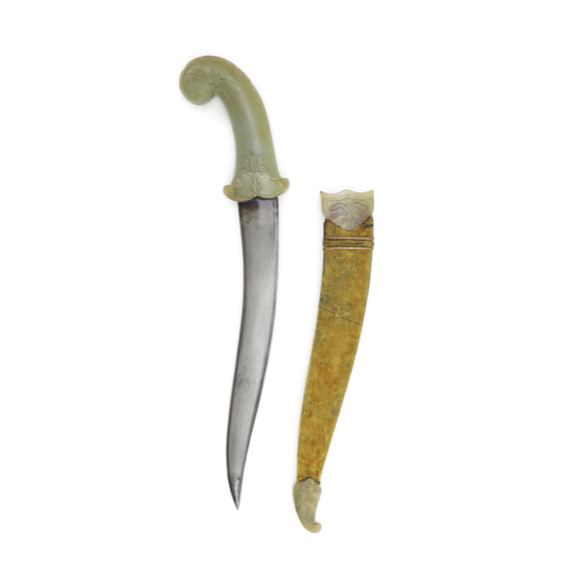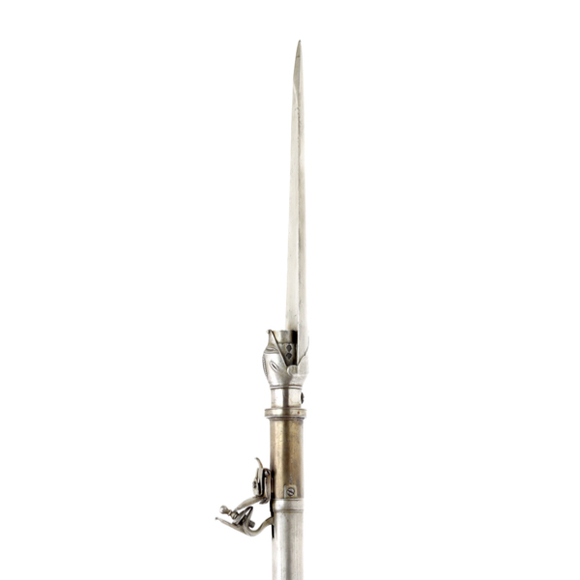With a fine wootz blade with a pronounced center ridge.

Sheathed 33.5 cm
Dagger 29.2 cm
18.8 cm
Base 4.8 mm
Tip 2.6 mm
Base 24 mm
190 grams
1 cm into hilt
Wootz steel, silver, wood, enamel, gold, leather
Lucknow, North India
19th century
From a UK collecton
Introduction
Lucknow in the early 19th century was India’s largest and richest city. One of its most famed products was Lucknow enamel. The designs were of landscapes, flowers or animals and executed in vibrant colors into silver or gilt silver.
Description
This kard dagger is a fine example of such work. The blade of boldly contrasting, high-quality wootz that is possibly imported from Persia. Of typical form for a kard with flat sides. There is a mark inlaid in gold on the blade on the left side, possibly a maker's mark. The peculiar mark looks like an R, with the vertical stroke being elongated and consisting of dots. Its probably a maker's
The bolster is decorated with flowers in gold overlay. The hilt has a full tang construction, with the gold overlay covering all exposed sides of the tang.
Heavy silver handle scales with remains of gilding are riveted to each side, engraved with designs of all sorts of animals, and enameled in vivid colors this work was known for. The hilt sinks deep into a wooden scabbard with enameled silver mounts and black pebble-grained leather.
Restoration history
Some of the enamel was missing when I got it, which I had professionally restored by Christine van der Ree of Amsterdam. The velvet came to me stripped bare with only fragments of its original dark blue covering. I had it re-covered by Gotscha Lagidse with black, pebble-grained leather often seen on fine kard scabbards. Both are very good craftspeople and this shows in their work.




















The style typical of Kutch, the execution far above what is normally seen on work from that area.
Nice and complete with opaque green hilt and scabbard mounts.
A what? Yes exactly. An extremely rare piece, the only example I am aware of in published collections at…

